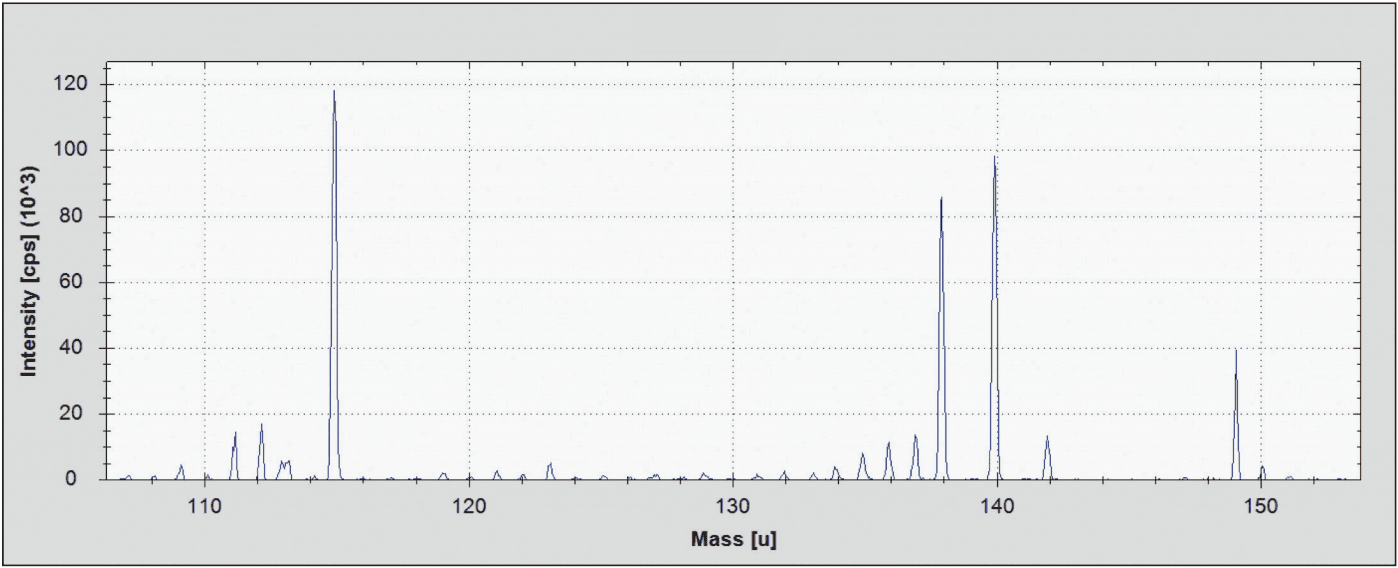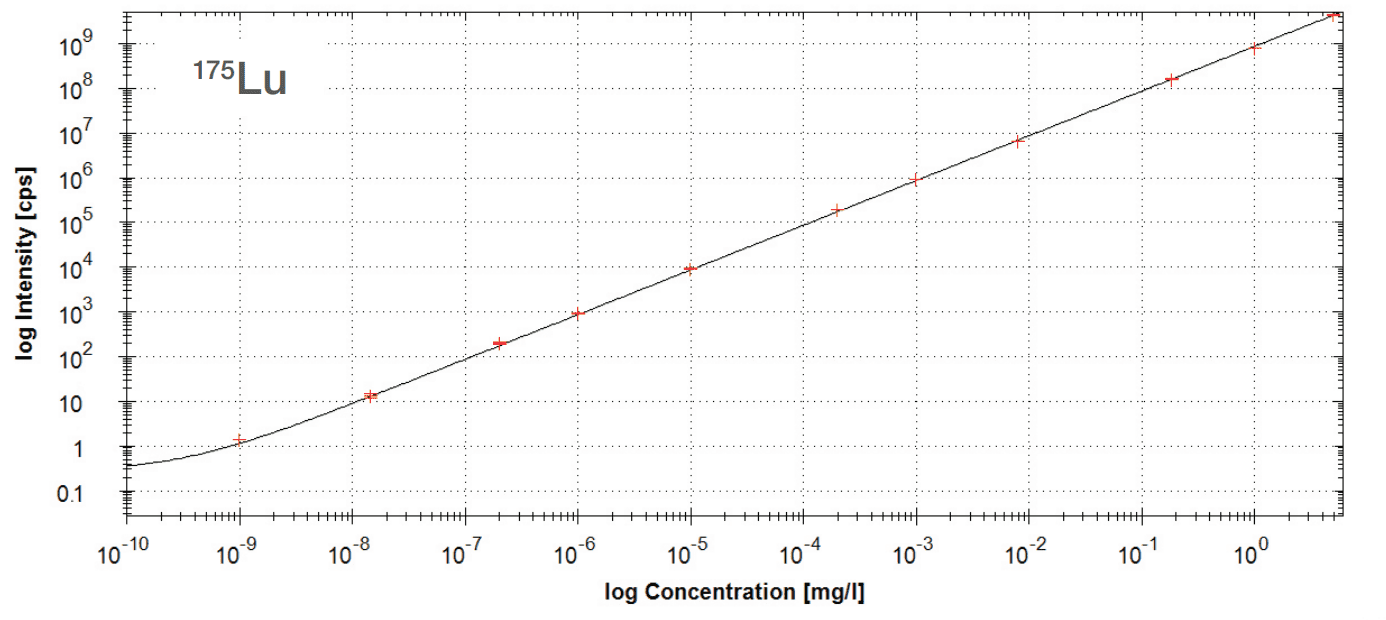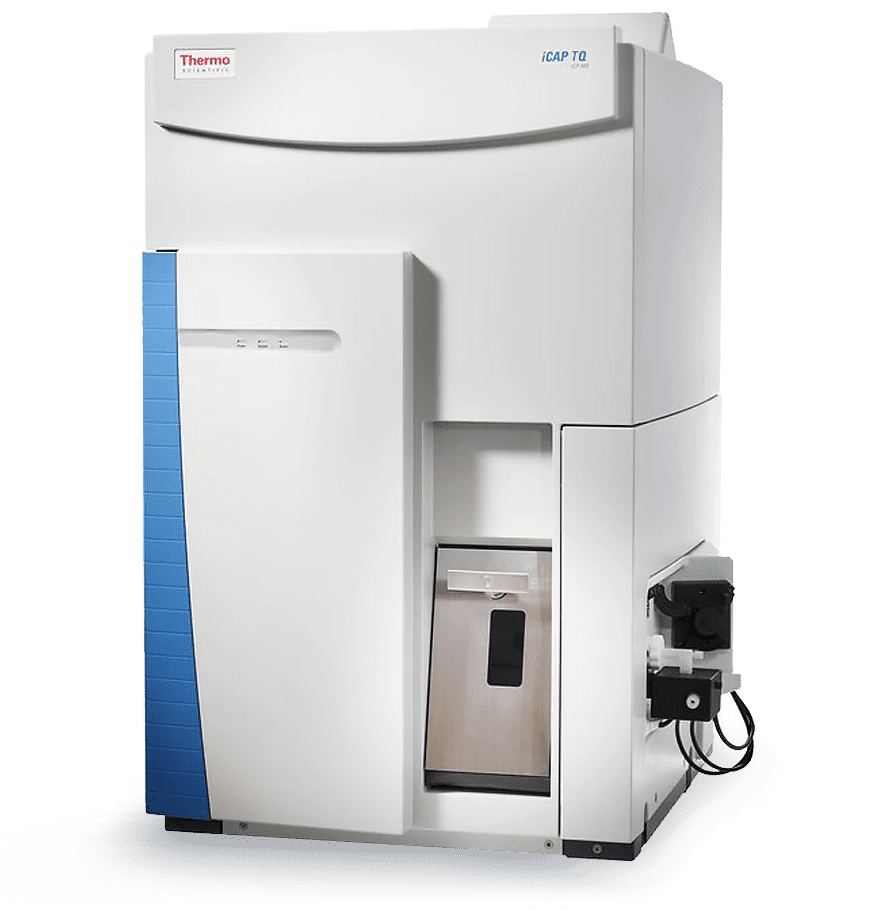Inductively Coupled Plasma Mass Spectroscopy (ICPMS)

Inductively Coupled Plasma Mass Spectroscopy (ICP-MS) is a destructive chemical analysis technique that measures the elemental composition of a sample. It is one of the most sensitive multiple-element analysis methods, with detection limits as low as ng/L.
Strengths
- Extremely high elemental sensitivity: limit on the order of parts-per-trillion
- Can detect most elements in the periodic table with a single experiment
- Accepts a wide array of sample types (solution or solid, inorganic or organic, simple composition to complex mixtures)
- Rapid analysis
- Isotope detection
Limitations
- Quantitative analysis requires parallel measurement on reference / control sample
- Does not easily capture molecular / compound information
- Destructive
- Sample preparation such as sample digestion via acid can be time-consuming
- Limited total dissolved solids (TDS) tolerance


